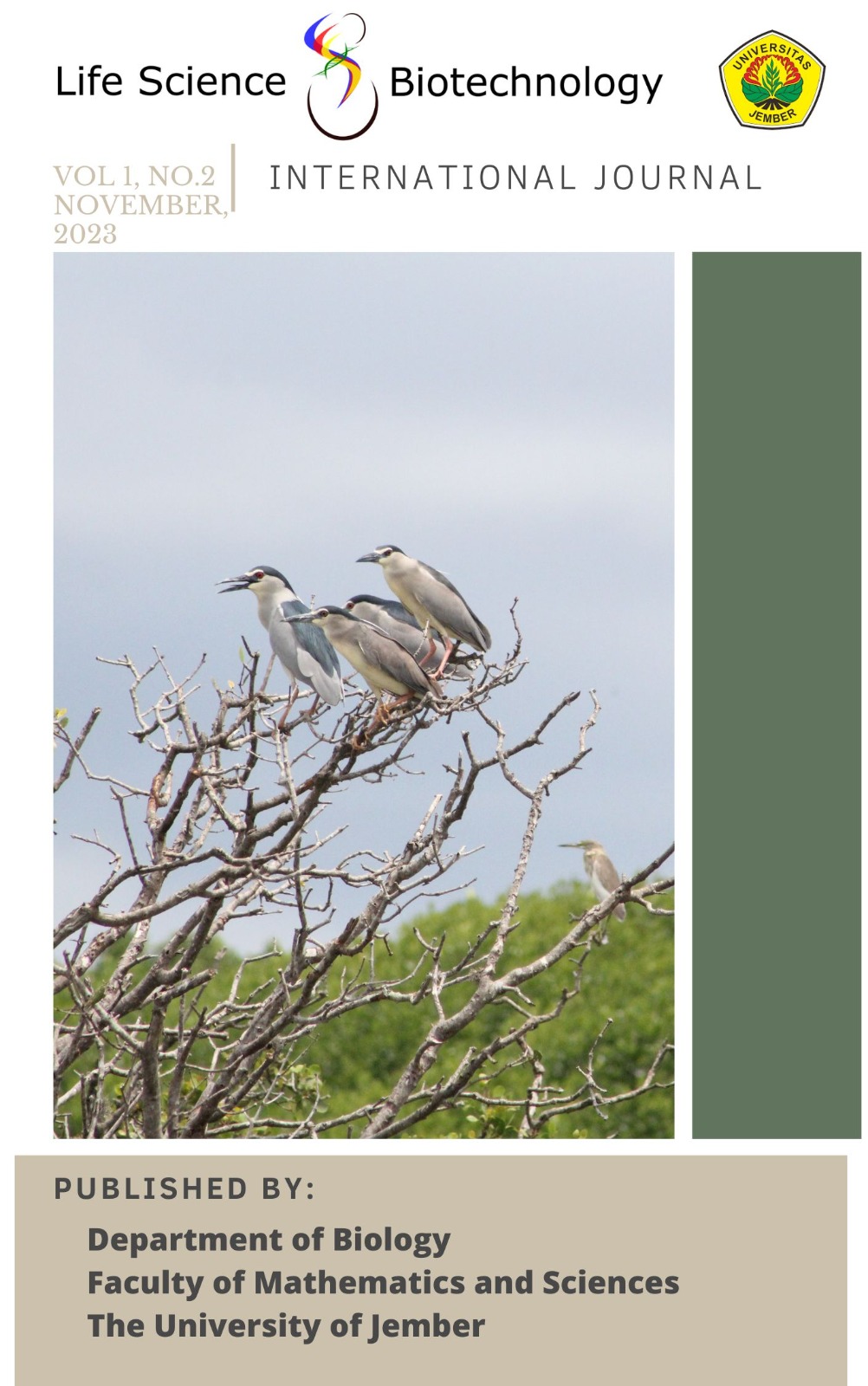in-silico PASS prediction for medicinal potency of antioxidant from Ranunculus japonicus Thunb.
DOI:
https://doi.org/10.19184/lsb.v1i2.45078Keywords:
antioxidant, flavonoids, PASS-Online, phenols, Ranunculus japonicusAbstract
Ranunculus japonicus has been traditionally used to treat various ailments, including malaria, jaundice, gastric problems, toothache, and eye inflammation. Recent studies reported that the plant extract effectively treat rheumatoid arthritis due to its secondary metabolites with antioxidant activities, such as flavonoids and phenols. In this study, we analyzed the flavonoids and phenols from R. japonicus using in silico methods. The study determined the flavonoid and phenol contents based on existing literature. The antioxidant potential analysis was conducted using PASS (Prediction of Activity Spectra for Substances). The results indicate the presence of two flavonoid compounds, namely Apigenin 6,8-di-C-|A-L-Arabinopyranoside and 3-Methylquercetin, and three phenol compounds, namely 3-Hydroxytrisol 3-O-glucoside, 4-Hydroxy-3-methoxyacetate, and Hydroxytrisol. Two compounds exhibited high bioactive potential (Pa value > 0.7), two compounds showed medium bioactive potential (Pa value > 0.5), and one compound exhibited low bioactive potential (Pa value < 0.5). The most bioactive compounds were Apigenin 6,8-di-C-|A-L-Arabinopyranoside and 3-Methylquercetin. The compounds with medium bioactivity were 3-Hydroxytrysol 3-O-glucoside and 4-Hydroxy-3-methoxycinnamic. The PASS online analysis revealed the potential of antioxidants for medicinal potencies




